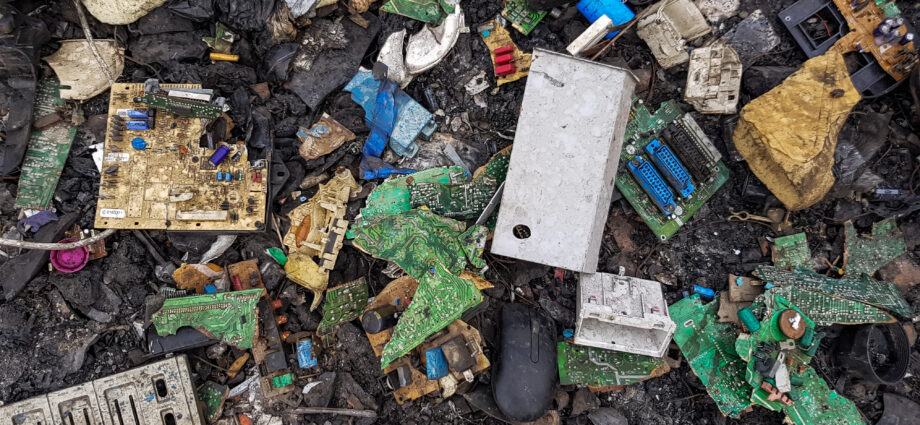
Around 90% of cheap, small tech items bought in the UK end up in landfills, new research shows. Last year, this amounted to almost half a billion items, with enough cables to circle the Earth five times
by Andrej Pavicevic – Managing Editor
October 14, 2023
Fast tech, according to a new Material Focus study, has become the fastest-growing e-waste category in the UK. Here the term “fast tech” refers to a broad range of cheap, small electrical items like headphones, cables, USB sticks, decorative lights, and disposable vapes.
“FastTech is seriously rivalling Fast Fashion [in terms of the amount sent to landfill], and is causing similar headaches,” said Scott Butler, Executive Director of Material Focus, a not-for-profit organization dedicated to promoting recycling.
So how much fast tech are we discarding?
As the new study now shows, over 500 million fast tech items were purchased in the UK last year, equating to an astonishing 16 purchases every second. An estimated 90% of these items (around 471 million), which cost an average of £4 each, end up in landfills.
For comparison, 30% of fast fashion items get thrown away.
Of those 471 million fast tech items discarded last year in the UK, 260 million were disposable vapes, 26 million were cables — enough to circle the earth five times, Material Focus says. There were also 29 million LED, solar, and decorative lights as well as almost 10 million USB sticks and just under five million mini fans.
In terms of consumer behavior, the study found that the average UK adult purchases nine fast tech items every year but discards eight, reflecting the 90% disposal rate. People buy these items for various reasons, including replacing broken items or simply for novelty purposes.
Despite progress in reducing the overall weight of electrical items discarded (attributed partly to lighter materials), a staggering 880 million electrical items of all types are currently languishing unused in UK households.
This represents a 67% increase compared to research conducted just three years ago and an “average household now has 30 items gathering dust.”
Good news: Fast tech recycling
Consumers, the researchers explain, are inclined to view fast tech items as disposable due to their low cost. But these items, even if relatively inexpensive, can contain valuable raw materials like gold, aluminium, copper and lithium, making their disposal an environmental and economic loss.
“As FastTech items are quite cheap and small, peple may not realise that they contain valuable materials and will just pop them in the bin, meaning we lose everything inside them instead of recycling them into something new,” Butler said, adding:
“The valuable materials contained in any electrical item can easily have a second life through donation, or being recycled into new items with a surprising range of uses, such as wind turbines, life-saving medical devices or even children’s playground equipment and electric vehicles.”
In their study, Material Focus emphasizes the importance of raising awareness about the recyclability of these items, reminding us that “anything with a plug, battery, or cable can be recycled” and that “any UK resident can find their nearest drop off point thanks to its Recycling Locator which has over 16,000 recycling points” across the country.
As Buttler put it: “The scale of the issue is huge, but there’s an easy solution – just as the trend for recycling and repurposing fashion has grown and grown, we want to encourage the nation to recycle FastTech, guilt and fuss-free.”
The organization also underlined the duty of retailers to help customers dispose of their old electrical products, regardless of where they were initially purchased.
Fast tech is undoubtedly a growing concern within the realm of e-waste, paralleling the challenges posed by fast fashion. To effectively combat this issue, widespread public education and a concerted effort to encourage guilt-free and hassle-free recycling of fast tech are essential.
The urgency of the situation demands a collective shift towards responsible disposal of electrical items and harnessing their potential for a more sustainable future.
Subscribe to our newsletter.
This article was originally published on IMPAKTER. Read the original article.

